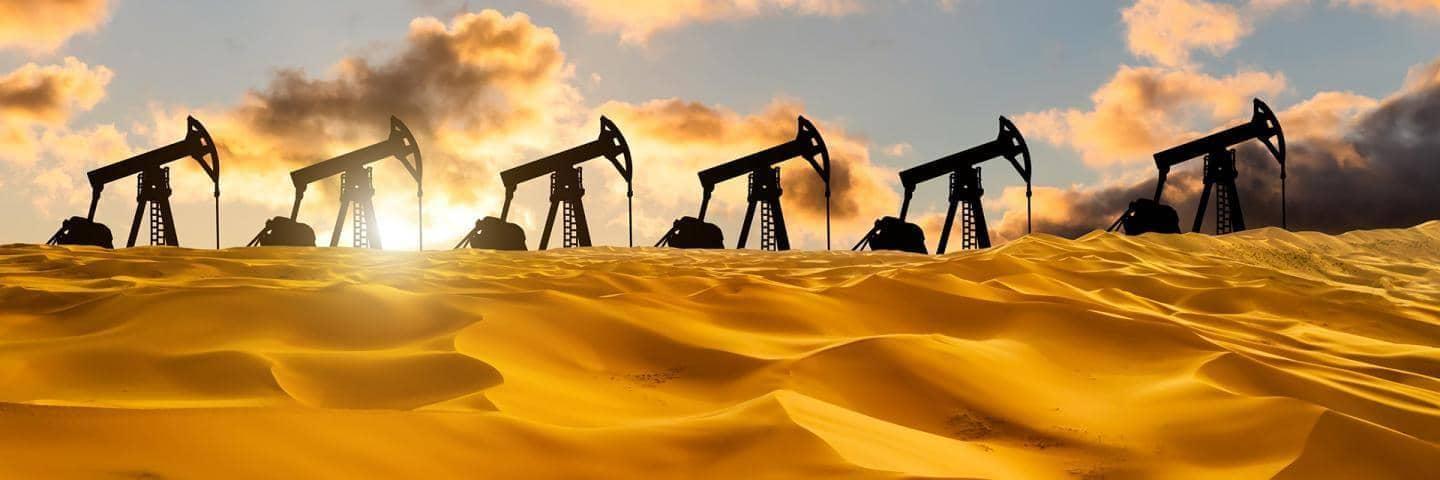
Middle East strikes it lucky
24 May 2023
Key points:
- Gulf economies are among the few to expand since the pandemic, as a boom in energy prices pumps much-needed revenue into the region.
- A radical reform agenda and focus on developing sustainable energy capabilities by many Middle Eastern countries have helped to boost inward investment.
- The region is gearing up for life after oil, as money is pumped into carbon capture technology and other green initiatives.
- Middle Eastern states are having success with promoting the region as a tourist hotspot, aided by the hosting of international sporting events and early opening of borders during the COVID-19 pandemic.
- Government finances are in rude health with buoyant commodity prices set to last. A prospering tourist sector will also help to swell budget surpluses. However, could the region’s over-reliance on the energy sector for funds and simmering political and religious tensions be its ‘Achilles heel’?
Please note: All data points quoted below, unless otherwise stated, were sourced via Bloomberg and were accurate at the time of writing (9 May 2023). Past performance is never a guide to future performance.
Gulf economies have been among the few to prosper since the COVID-19 pandemic hit the world in 2021. A rapid vaccination programme in the region, along with a subsequent energy shock boosting oil and gas prices, helped Middle Eastern countries to bank impressive economic growth in the last two years, with Kuwait (8.7%), Saudi Arabia (8.7%) and United Arab Emirates (UAE) (7.6%) leading the way.
Gulf economies enjoy oil price dividend
Crude prices have eased from the $140 a barrel peak seen when Russia invaded Ukraine in February 2022. However, with tight supply and demand dynamics likely this year, prices are expected to remain above pre-invasion levels.
The International Monetary Fund believes that higher energy prices helped the Gulf Cooperating Council (GCC) countries — Saudi Arabia, United Arab Emirates, Kuwait, Qatar, Bahrain and Oman —to earn a $100 billion fiscal surplus last year. Clearly, if energy prices remain elevated, then government finances should swell, with GCC members Saudi Arabia, Kuwait and UAE being among the top-ten countries by proven oil reserves1.
Healthy finances allow Gulf authorities to rebuild financial buffers, increase government spending and support structural reforms. These include liberalising, diversifying and digitalising economies, while improving education resources, healthcare provision and advancing worker equality. Furthermore, laws are being introduced that protect trademarks, increase data protection and protect industrial property rights.
The reforms seem to be working. Investment into the region is booming, with investors attracted by the region’s focus on infrastructure, innovation and technology development. Under its 2030 vision, Saudi Arabia aims to increase the contribution of foreign direct investment (FDI) from 0.7% of GDP2 in 2016, to 5.7% by 20303.
Energy transition converts
Gulf countries are preparing for a world that has transitioned away from carbon-based fuels to renewable ones. As an example, albeit an extreme one, Saudi Arabia is building a $5 billion wind and solar powered hydrogen plant at its Neom smart mega-city initiative.
Meanwhile, the UAE is developing green industries, skills and jobs in a push to achieve the goals set out in the Paris Agreement4. The country, perhaps not surprisingly, is a fan of carbon capture technology and has flagged its clean-energy credentials by opening three nuclear power stations. Indeed, the next UN Climate Change Conference will be held in the country towards the end of this year.
Bring on the tourists
Middle Eastern economies’ relaxation of border controls before many others in the pandemic acted like a magnet for tourists. The growth in Dubai’s visitor numbers over the last two years has been especially impressive. The country attracted 14.4 million international overnight visitors in 2022, a year-on-year surge of 97% on 2021’s data, according to the UN World Tourism Organisation.
The potential economic benefits of the Kingdom’s approach are large. The government aims to lift the tourism sector’s contribution to its annual economic growth from 4% in 2022, to 10% by the end of this decade5.
Growth as a financial hub
The Middle East has long been seen as an important strategic trading centre. Its wealth of natural resources is one reason why the region’s role as a key exchange hub looks set to expand, as does the region’s position as a financial centre.
The enormous wealth the region has accumulated in sovereign wealth funds provides it with the financial muscle to spread its influence around the world. The authorities aim to use these investment flows as a way to expand capital market capabilities in the region. The area’s promotion of cryptocurrency adoption and regulation is one example of this approach in action.
How long can the good times roll?
With energy prices set to remain elevated for some time, the government finances in oil-rich Gulf states should prosper, supported by growth in tourism revenues and an expanding role as a trading centre. The leaders in the region will probably use the additional funds to diversify their economies and push radical structural and social changes.
However, it is rarely straightforward in a part of the world that regularly grapples with religious and political conflicts. Meanwhile, an overreliance on commodities to generate funds makes it vulnerable to a sell-off in fuel prices.